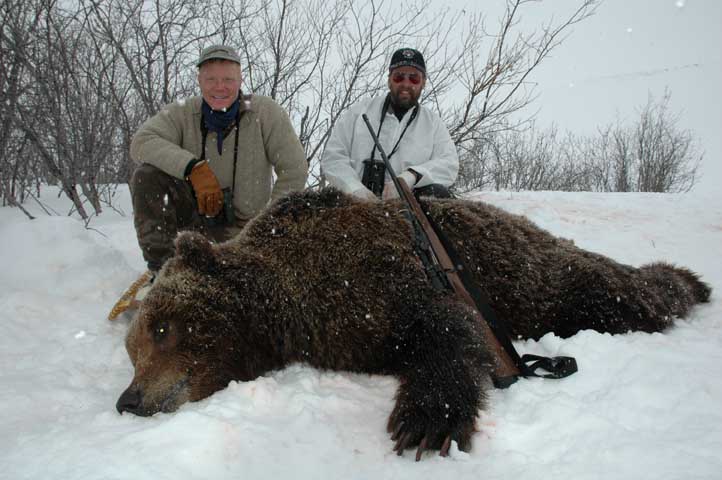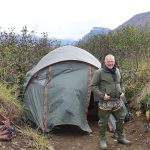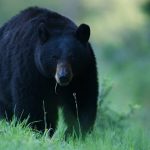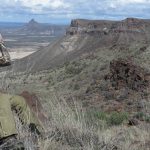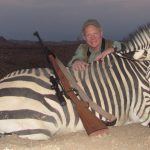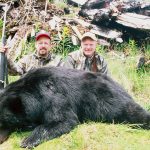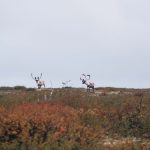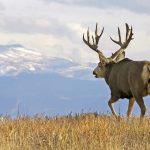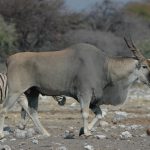A hunt for big bears is one of North America’s top outdoor adventures.
Two years ago daughter Brittany, my friend and cameraman Conrad Evarts, outfitter Ron Fleming, his wife, Benda, and I were sitting on a high ridge just south of northern British Columbia’s Spatsizi Plateau. Ostensibly we were glassing for caribou, but really we were just glassing. I was picking apart a bare ridge far across a deep valley when I saw him, the biggest grizzly bear I’ve ever seen.
I told Ron, and I’ll never forget what he said: “Where is he from that big rock?”
The rock was the bear, but I understood the confusion. The bear was very far away and, at the moment, lying still on the hillside. He looked like a boulder…a very big boulder. Then he started to move again, rooting around. We got the spotting scope on him and watched him for a long time. An interior grizzly simply should not be that big. I don’t claim to be a great judge of bears—that’s a fine art—but I’ve seen some big Alaskan brown bears, and this bear would beat most of them.
That was just one day in an amazing ten days during which we glassed grizzlies pretty much every day, mostly on the hillside across the lake from camp. We had no bear tags and Ron had no quota available, and until I saw that bear it didn’t matter in the least. Some years back I shot a very nice grizzly with Dave Leonard, on the Noatak River in Arctic Alaska. At that time it had been many years since I’d taken a grizzly bear, and this was by far my biggest and best. That being the case, I said at the time that it would be my last grizzly. I’ve had no trouble holding the thought…until I saw that bear.
Fast forward two years. I’ve just come out of the same camp, having spent quite a bit of the last ten days glassing for that bear. This time I had a tag and Ron had the quota, so I suppose I would have taken that bear if I’d seen him. Whether I would have taken a lesser bear or not is up for grabs. We saw a gorgeous blond grizzly the first day, not a big bear and not tempting, and in a long spell of intermittent rain and fog that was the only grizzly we saw. But if intent counts, I broke my word: If I’d seen that bear I would have shot him if I could have.
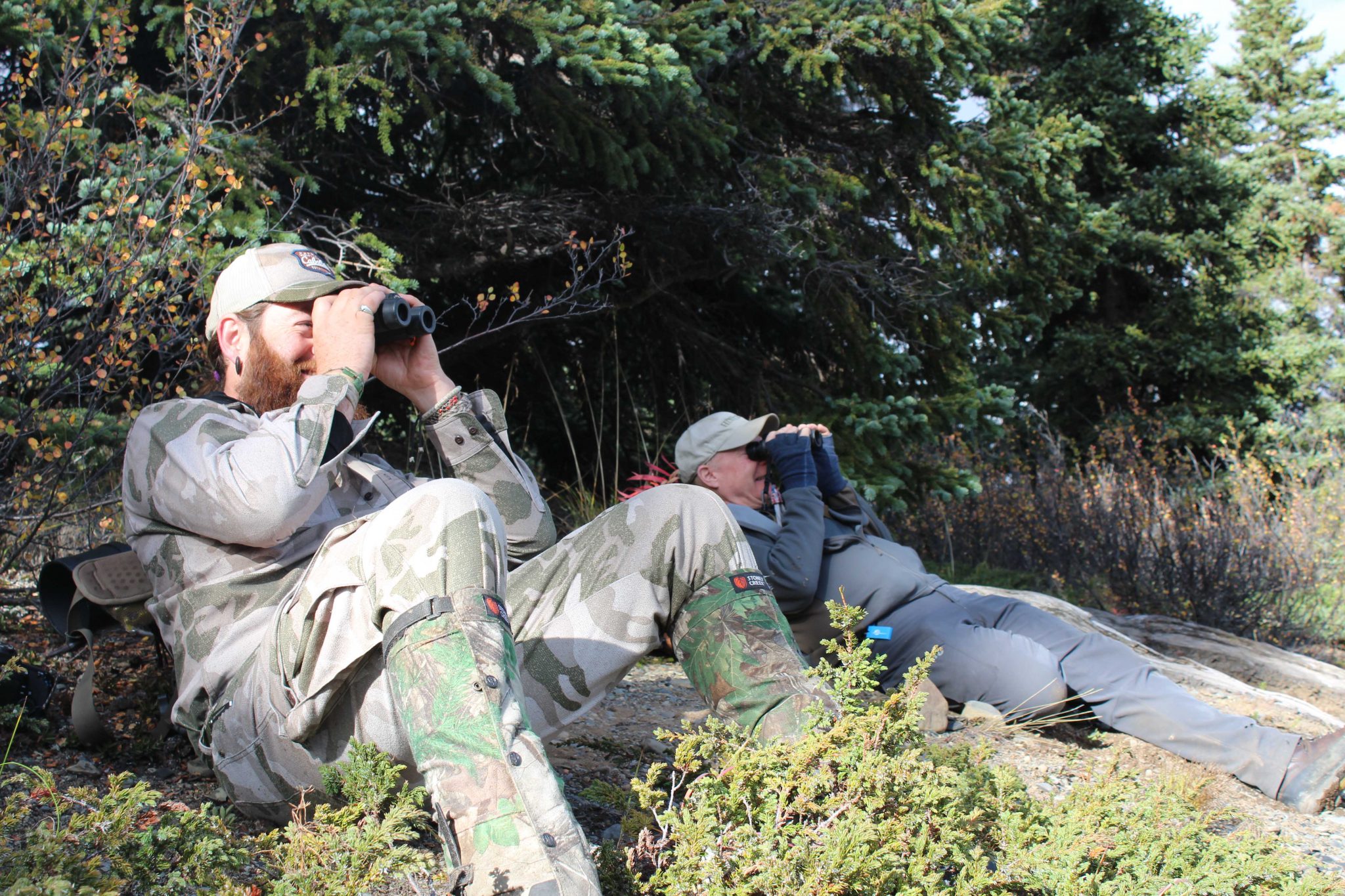
Interior grizzlies are widely scattered, so hunting is usually a matter of extremely painstaking and patient glassing.
I don’t claim to have a great deal in common with that most uncommon American, Theodore Roosevelt, but one sentiment we share is revering the grizzly bear as the true symbol of the American wilderness. Unlike many young Westerners today I didn’t grow up with grizzlies, but I took my first more than forty years ago, also in B.C. but down in the Kootenays, probably just three miles north of the U.S. border. That was just before I reported to Marine Corps Basic School, so my classmates quickly dubbed me “Griz.” Fortunately the nickname didn’t stick, but I have retained a special affinity for the long-clawed, dish-faced, hump-backed grizzly bear.
Although there are no real limits on a grizzly bear’s size he is generally not as large as his better- fed coastal brown bear cousins, and his population is much less dense as he forages for scarcer food. There are no guarantees on hunts for any of our big bears, but if the weather cooperates and one chooses well in area and outfitter most coastal brown bear hunts are successful. The grizzly is another story: 50 percent is very good, and a one-in-three chance ain’t bad. When I shot my big grizzly on the Noatak I knew I was in the right area, and I knew I had a great outfitter…so I went three times before we caught perfect spring conditions and I took what should be (but may not be) my last grizzly. So I’m not in the least bothered that I didn’t get a bear these past ten days. Whether I’ll try again is uncertain. That monstrous bear was seen a year ago, but hasn’t been seen since. On the other hand, most of the time there’s no one to see him. So maybe he’s still alive, and maybe he isn’t…and maybe I’ll try again.
I will tell you that it is a huge luxury to be able to even consider targeting just one bear in the vastness of the American wilderness. That’s not necessarily something I recommend, but it’s a luxury I can enjoy; I don’t need another grizzly, and morally perhaps I shouldn’t take another. However, I want grizzlies in the American wilderness, and I want them to be hunted. Pursuing a grizzly is a unique and dramatic experience, perhaps the apex North American adventure. But there are two more pragmatic reasons why I believe the great bears should be hunted where populations allow it. In our often topsy-turvy world of political correctness gone mad there is no better proof of a stable wildlife population than a regulated hunting season. Grizzlies are stable or increasing where they are hunted. And there is evidence that limited hunting reduces human-bear conflict, not by sheer removal of bears but by instilling respect for humans rather than contempt.
At this writing there are four options for hunting grizzly bears: Alaska, British Columbia, Yukon, and Northwest Territories/Nunavut. Alaska and B.C. have the largest populations. Alaska estimates about 30,000 brown/grizzly bears, but does not distinguish between interior grizzlies and coastal brown bears; B.C. estimates over 15,000 grizzlies. Bears are stable or increasing, and both jurisdictions have a carefully regulated harvest that, at less than three percent, is totally sustainable. Yukon is far north interior; the bear population is widely scattered, but with just 35,000 people many of her wildlife populations exceed the human population. This is not true of grizzlies, but Yukon has several thousand grizzlies and they’re doing just fine. In Northwest Territories the largest population is in the far west MacKenzie District where, inexplicably, grizzly hunting has been closed for many years. To the east and on into Nunavut the grizzlies are considered barren ground grizzlies, a bit smaller but with exceptional coats. The population is not dense, but specialized Arctic hunts by snow machine are highly successful.
There may actually be room for growth. Alberta has had a moratorium on grizzly hunting since 2010; their grizzlies are both increasing and spreading east toward the prairies, with escalation in human/bear conflict. It doesn’t appear that hunting will resume any time soon, but it’s not impossible. In the Lower 48 recovery continues in the Yellowstone and Glacier Parks ecosystems, with individual grizzlies now roaming far and wide and bear accidents continuing to increase. Both Montana and Wyoming are ready to reopen (very) limited hunting. The Feds are not—yet—but it seems reasonably certain that these populations will be downlisted (as happened with wolves), and when the states take over management limited hunting is likely to be part of the plan. So I actually think I’ll see grizzly hunting in the American Rockies once again. Whether I’d try to participate or not remains to be seen, but a handful of Montana or Wyoming grizzly permits would be ultimate proof of a huge conservation success!

